Best Lens for Landscape Photos: Full Guide for Every Budget
You need a lens that is suitable for vivid images of wide skies, distant hills, and large spaces to take landscape photos. If the lens is not suitable for such a scene, you may not be able to take pictures as you imagined. In this guide, we will introduce 5 best lens for landscape photos, what to ask for in landscape lenses, which models are best depending on the type of camera. Please refer to this guide and choose a lens that suits your camera and shooting style.
Part 1: What Makes a Lens Ideal for Landscape Photography?
Choosing the best lens for landscape photos is an important step for better results in landscape photography. No lens can handle the details, colors and lighting that are common in outdoor scenes. Some lenses have soft edges and others cause unnecessary distortion.
Wide Focal Length (14mm-35mm)
A wide-angle lens lets you capture more of the scene. For landscapes, this means showing the whole valley, mountain range, or seashore. A focal length between 14mm and 35mm is a common range.
- 14mm: Super wide and great for big open scenes.
- 24mm: A safe choice for all-around use.
- 35mm: Still wide but closer to what the human eye sees.
Sharpness Across the Frame
Landscape photographs often have details from end to end. I want to avoid the sharp center and blurry sides. The best lens for landscape photos keeps all parts of the photo up and down, left and right, four corners, and center sharp.
Low Distortion and Flare Control
Wide lenses can cause curves or cause unnecessary glare due to sunlight. Look for best lens for landscape photos with built-in functions to control distortion and flares. This allows you to keep natural photos even if you shoot towards the sun.
Part 2: 5 Best Lenses for Landscape Photos in 2025
With so many lenses, it may be difficult to know which one is really suitable for landscape photography. In this section, we picked up five outstanding lenses in 2025 with sharp images, sturdy construction and high-cost performance.
1. Nikon Z 14-30mm f/4 S
The Nikon Z 14-30mm F4 S is for full-size mirrorless cameras and is suitable for landscape shooting. Starting at 14 mm, it can fit more in the frame. The lens is light and easy to carry when shooting outdoors. It is also useful because it supports regular filters.

Pros:
- Provides a very sharp image throughout the frame, perfect for clear landscape photos.
- Since the open F value is 2.8, details can be captured even in dark places.
- The hand blur correction function can reduce the blur by hand movement.
Cons:
- Because of the high price, it is not suitable for beginners and casual photographers.
- The lens is quite heavy and tired of carrying for a long time.
- Some users may feel that it is larger than other wide-angle lenses.
2. Sony FE 20mm f/1.8 G
The Sony FE 20mm F1.8 G is a small, sharp lens for Sony's full-size camera. You can take a wide and clear picture, so it is suitable for nature and city scenery. The open F value of the F1.8 is useful for shooting under low light such as at dusk. It is light and easy to carry.

Pros:
- With very few distortions, you can take natural wide photos.
- A standard filter can be used for the front element, which is useful for controlling light.
- Compact design, not bulky even with mirrorless camera.
Cons:
- The aperture F4 is not very bright in dark places or at night.
- Since shake correction is not built-in.
- Compared to luxury lenses, the sharpness of the surrounding area is slightly inferior.
3. Canon RF 15-35mm f/2.8L IS USM
The best canon lens for landscape photos were designed for full frame mirrorless users who needed flexibility and image quality. It covers a useful zoom range from wide shooting to tight shooting. The open F value of the F2.8 captures more light and helps to shoot at sunrise or sunset.
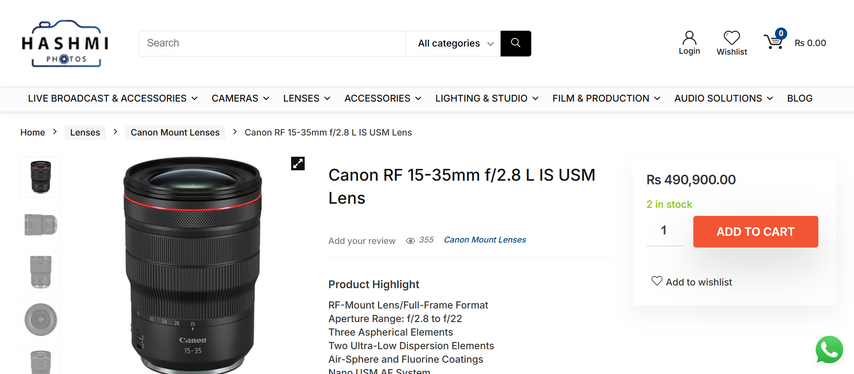
Pros:
- Sharpness and clarity excellent even when used in open.
- Small and lightweight, easy to carry for outdoor shooting.
- 8 wide aperture is suitable for low light and soft background.
Cons:
- Because of the fixed focal length, there is no zoom.
- When shooting in open, the peripheral part may appear soft.
- More expensive than many prime lenses with similar focal lengths.
4. Fujifilm XF 10-24mm f/4 R OIS WR
This lens is made for the mirrorless camera of the Fujifilm crop sensor. With a sharp image, it is suitable for shooting in a wide landscape and a wide city. This lens is equipped with optical hand blur correction, which is useful for handheld shooting. Because it is weatherproof, it can be used in light rain and dusty places.
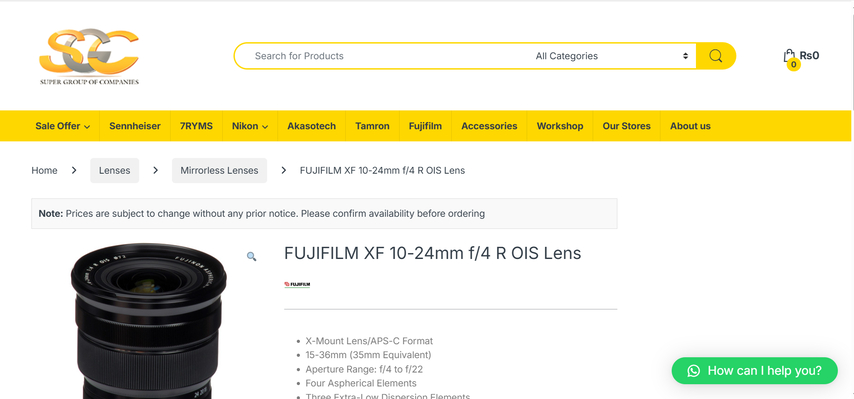
Pros:
- Cover from wide view to ultra-wide view, flexible for various scenes.
- Weather seal design to protect against light rain and dust.
- Built-in optical handshake correction stabilizes shooting.
Cons:
- Because the open F value is F4, low light shooting is limited.
- There is a slight barrel type distortion at the widest angle zoom.
- Larger than other wide-angle lenses of Fujifilm.
5. Sigma 18-50mm f/2.8 DC DN (Sony E, L-mount, Fuji X)
This lens was designed for those seeking something small and useful for various types of outdoor photography. It goes well with the mirrorless camera of crop sensor and covers from wide to standard. The open F value of the F2.8 is the same at any zoom level and is useful at low light.
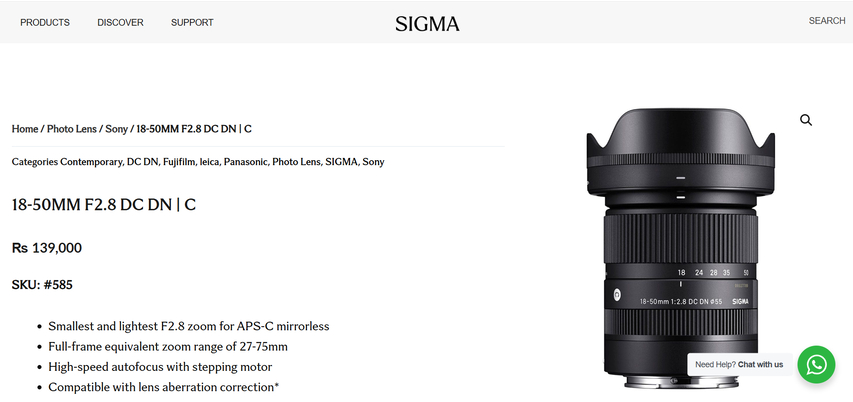
Pros:
- The open F value of the F2.8 is useful at low light, and the background.
- It is compact and lightweight, so you can carry it all day.
- A versatile zoom range covering both wide and normal perspectives.
Cons:
- It only supports the mirrorless camera of the crop sensor and does not support full size.
- Because there is no weather seal, careful care is required under severe conditions.
- Autofocus is slower than native lens.
Part 3: Bonus Tip - Enhance Landscape Photo Quality with AI
It is important to use appropriate lenses, but the improvement of landscape photography is not limited. AI tools like HitPaw FotorPea help you improve your image after shooting. This software sharpens details, balances colors, and reduces unnecessary noise, making photos clearer and more natural. It also corrects common problems such as exposure and contrast without the need for complex editing skills. By adding this step after shooting, you can maximize the potential of landscape photography with little effort and make it stand out.
Key Features to Enhance Landscape Photos
- Best AI photo enhancers available on Windows and Mac.
- Improve image quality with 16K photo enhancer with one click.
- Easily blur the photo and remove the noise of the photo.
- Enlarge and refine images without compromising image quality.
- DeepSeek's AI image generator brings out next-level creativity.
How to Enhance Landscape Photos with HitPaw FotorPea:
Step 1: Download and Install HitPaw FotorPea
Go to the official HitPaw FotorPea website or click the download button to get the installer. Follow the instructions to complete installation.
Step 2: Upload Your Photo
Launch HitPaw FotorPea and click "Enhance Photos Now" to upload your image. Supported formats: PNG, JPEG, JPG, WEBP, and TIFF.

Tip: Use a sample image to test the tool instantly.
Step 3: Choose the Right AI Model
Click the Preview button to begin enhancement. Choose from 9 AI models designed for different needs. You can use multiple models for better results.
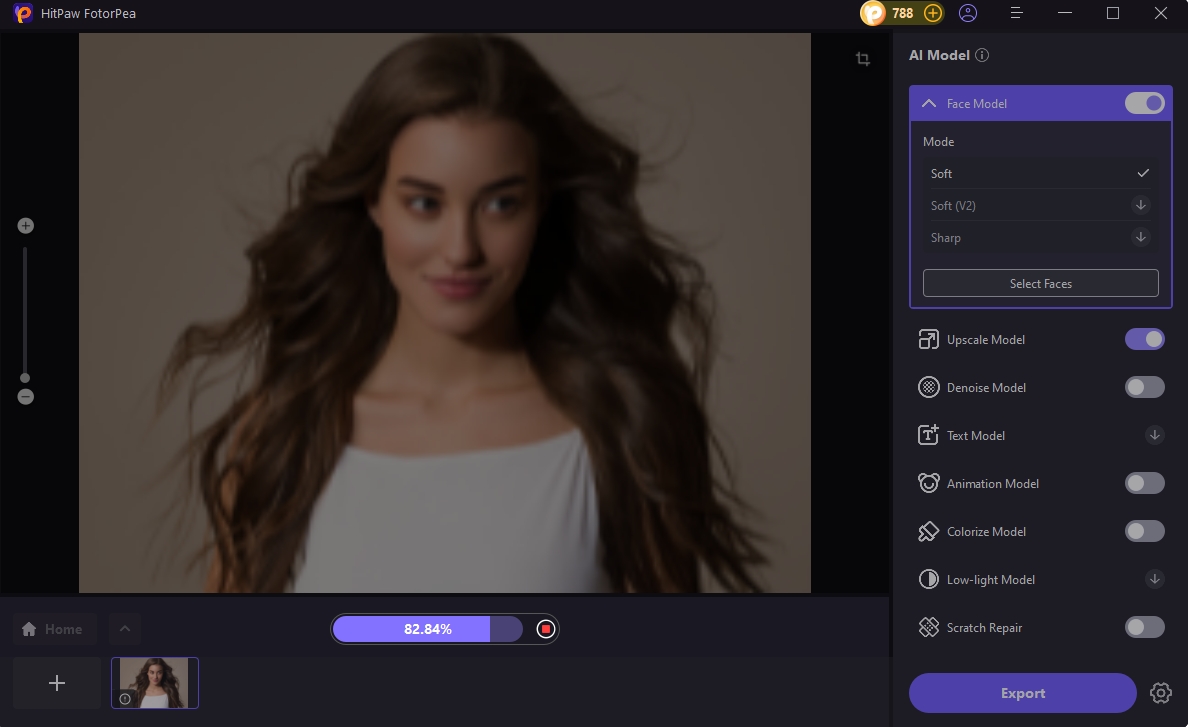
Step 4: Preview and Export
Once you're happy with the result, click Export to save the final photo.
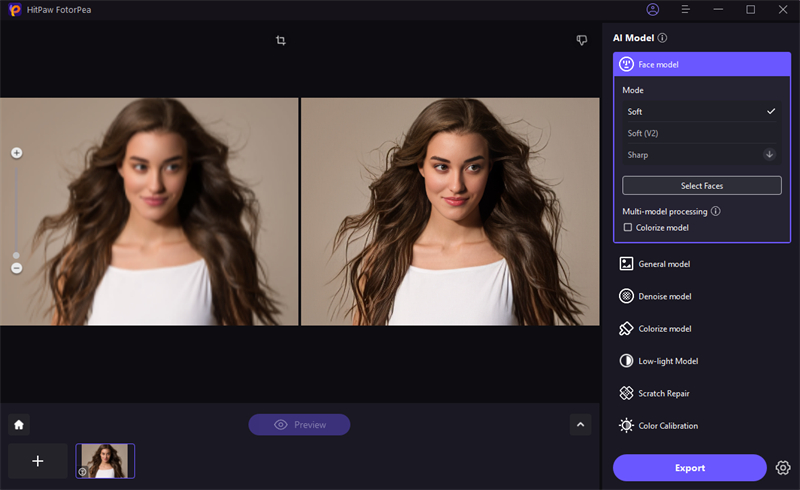
FAQs About the Best Lens for Landscape Photos
Q1. Can I use a portrait lens for landscape shots?
A1. Yes, but it is not ideal. Portrait lenses (such as 50mm and 85mm) are suitable for close-up subjects. I do not see the wide scenes that are often required in landscape photography.
Q2. Is a wide-angle lens always better for landscapes?
A2. Not necessarily. In landscape photography, wide-angle lenses are common, but sometimes middle-distance lenses such as 35mm and 50mm.
Q3. Do filters matter more than lenses for landscape photography?
A3. Filters such as ND and polarizing plates help control light and reflection, but cannot solve sharpness and distortion problems. Good lenses remain the most important.
Conclusion
Lenses are important for taking better landscape photos. Choose a wide, sharp camera type. Choose from brand or best lens for landscape photos according to your budget. And what should not be forgotten is that no matter how good the lens is, it is not always possible to take a perfect picture immediately by taking it out of the camera. After editing, you can use FP Photo Enhancer to maximize the quality of your photos. Combine the selected lens with this tool for great results.








 HitPaw Univd (Video Converter)
HitPaw Univd (Video Converter) HitPaw VoicePea
HitPaw VoicePea  HitPaw VikPea (Video Enhancer)
HitPaw VikPea (Video Enhancer)



Share this article:
Select the product rating:
Daniel Walker
Editor-in-Chief
This post was written by Editor Daniel Walker whose passion lies in bridging the gap between cutting-edge technology and everyday creativity. The content he created inspires the audience to embrace digital tools confidently.
View all ArticlesLeave a Comment
Create your review for HitPaw articles